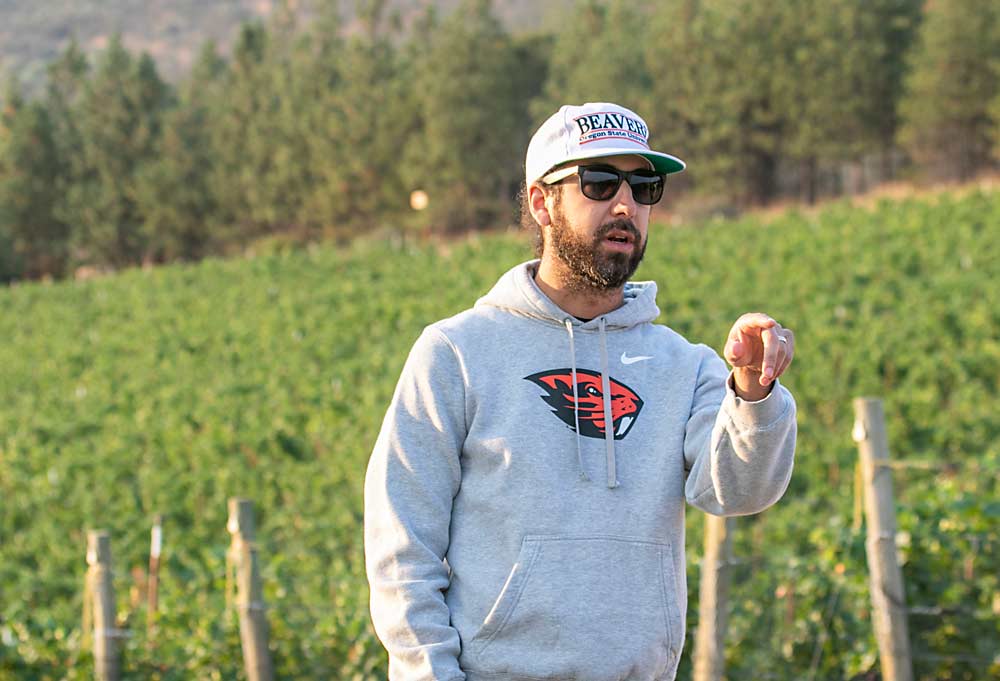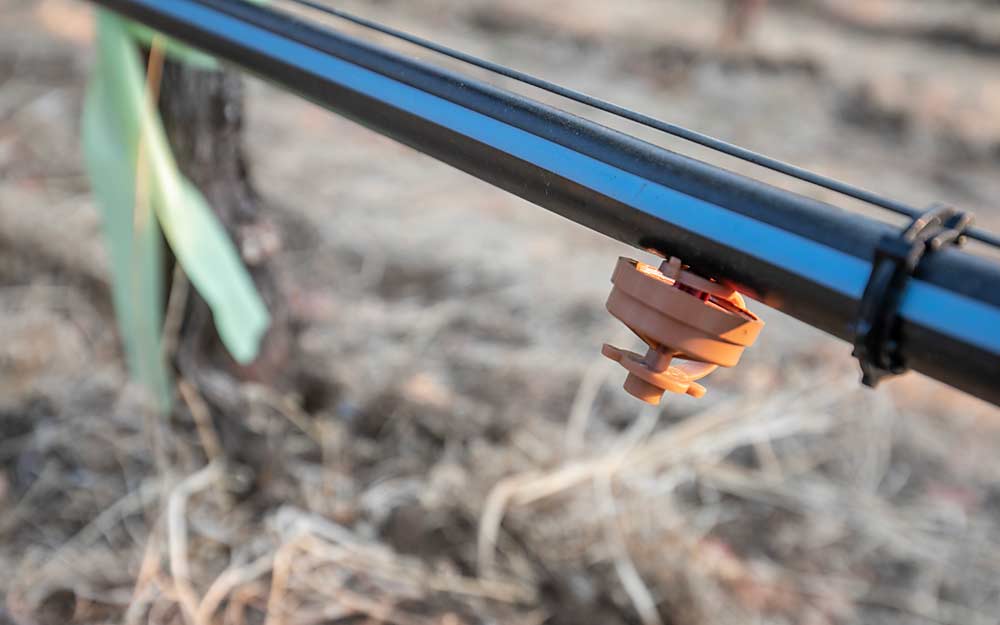Facing water shortages, the Rogue River Valley’s wine grape growers turned their questions to Oregon State University viticulturist Alec Levin, who has been running irrigation studies in the region since he joined the Southern Oregon Research and Extension Center in 2016.
This year, he steps into the role of center director.
But to answer the question of how best to use a very limited water supply in 2021 and 2022, Levin turned to his doctorate research conducted in Fresno, California.
“We had these different experiments where we would water a lot early and then cut the water back, or we would not water early and then water later,” he said. “Every single year, the results were the same — that putting the water on early, when we had it, and then cutting it off was the way to go in terms of yield and fruit quality.”
First, growers want to max out the soil’s water reserves going into the season by watching for signs of water stress via pressure bomb tests or when shoot tips start to wilt. Then, start irrigating “to nurse the vines through but not encourage development of a giant canopy,” he said.
And when the irrigation districts warned that water would soon be cut off, he advised growers to start cycling through blocks to put on as much water as possible to fill the soil profile.
“So, when the water gets cut off, you have that small canopy and you have as much water as possible,” he said. Yields were down, inevitably, but growers managed to harvest commercial-quality fruit.

Outside of such a dire shortage, Levin’s ongoing research with grower collaborators aims to understand how to optimize irrigation in the region. One trial focused on how to assess when growers should start irrigation, almost like a biofix date for pest control.
“We’re using the pressure bomb to watch the vines to see how they get drier and drier and drier,” he said.
Levin looked at five irrigation start times, dictated by plant water stress, not the calendar. Once he turns on the water, all the vines in the experiment get the same amount of water for the remainder of the season. At three Pinot Noir vineyards planted on 3309C rootstocks at different locations, soils and microclimates across the Rogue River Valley, he found the same trends in 2021.
“Number one: The longer you wait to start, the less yield you’ll have — period,” he said. “We saw that at every single site very clearly.”
Levin found that a small delay increased the amount of Brix at harvest, but additional delay in irrigation onset led to decreased Brix.
This shows how growers can balance different goals by how they irrigate.
Then in 2022, he added a sixth treatment: extra water for the earliest start.
“Deficit irrigation is a wonderful tool, but it sort of presupposes that everything else is OK too,” Levin said. If there are other stresses present, such as virus or pest pressure or fertility, water stress can become a negative, rather than a positive, on fruit quality.

“And let’s be clear, watering these vines more is still not applying very much water,” he said. “Applying 17 gallons a week in the peak of summer translates to about 14 inches for the whole year.”
The study continues this year, and Levin is working with colleagues at the Oregon Wine Research Institute to follow their fruit from the experiment into wines to assess fruit quality. The research is supported by the Oregon Wine Board, a specialty crop block grant from the Oregon Department of Agriculture, and the Northwest Center for Small Fruits Research.
—by Kate Prengaman






Leave A Comment